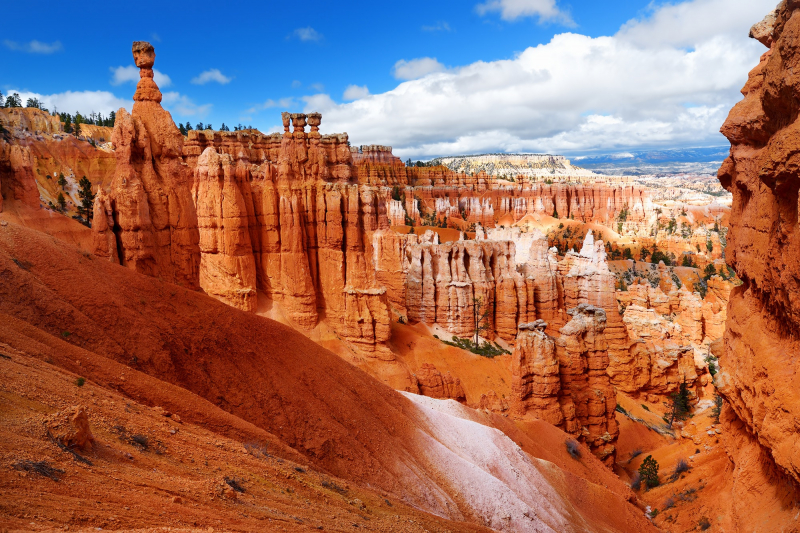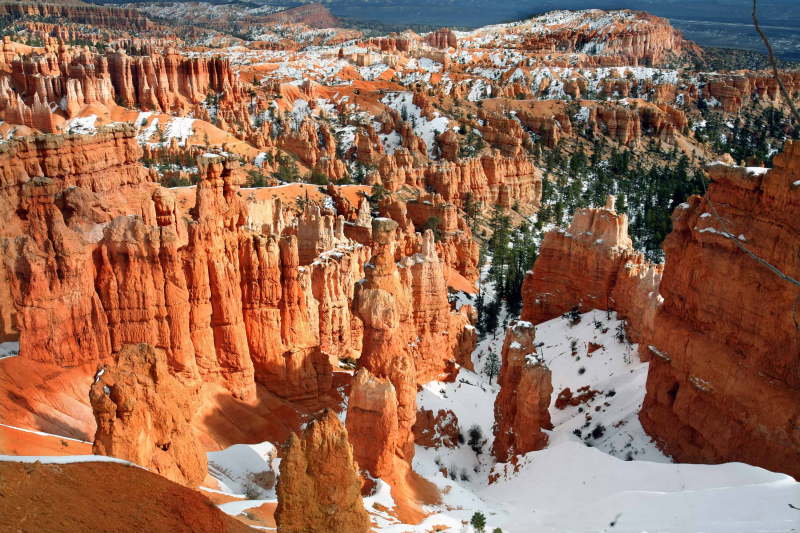Bryce Canyon National Park

Bryce Canyon National Park, located in southwestern Utah, has an otherworldly landscape made up of a dozen amphitheaters, or horseshoe-shaped canyons, on an eroded escarpment of the Paunsaugunt Plateau. Visitors who enjoy exploring the slot canyons, windows, fins, and, most notably, the tall, skinny spires known as hoodoos are drawn to the whimsical formations of limestone rock created by erosion and rain. Bryce Canyon, with elevations reaching 9,115 feet, provides approximately 150 miles of visibility on a clear day. Furthermore, because it is exposed to very little light pollution, the park provides ideal conditions for stargazing.
Bryce Canyon National Park is best visited between May and September. This time of year not only has the warmest weather of the year, but it also has a plethora of ranger activities. October through April has its own set of charms. There are fewer people, the weather is cooler, and the fall foliage and wildflowers can be breathtaking. Snow transforms the park in the winter, and visitors can go cross-country skiing and snowshoeing. But keep in mind that, due to its high elevation, the weather at Bryce Canyon can be quite variable in the fall, winter, and spring.











